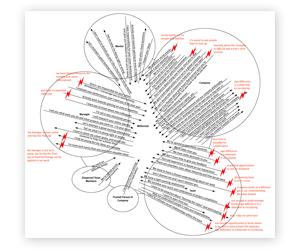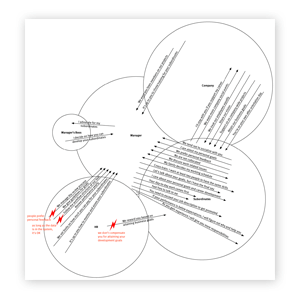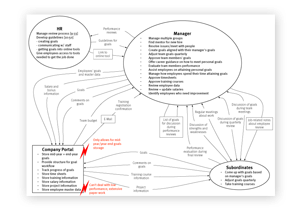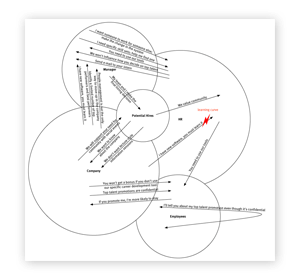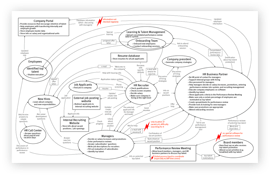Contextual Inquiries
Purpose
The purpose of conducting contextual inquiries (CIs) is to gather qualitative data about work as it happens and in the natural setting that it occurs. This is in contrast to data that is gathered in surveys and focus groups, where participants typically answer questions out of context, which results in data that is somewhat questionable as the responses are based on memory and often from summaries of events. With CIs, data is collected as it happens, and the data is captured in five different types of models: flow models, cultural models, sequence models, artifact models, and physical models. Because our project involves understanding events that occur on a larger timescale and relationships that form over weeks and months, the CIs we conducted were more retrospective in nature compared to typical work-related CIs. As a result, we asked our participants to provide artifacts of their work when applicable (such as spreadsheets or e-mails) in order to provide as much context as possible given the circumstances.
Focus
While we were able to collect some quantitative data from our surveys, we needed to collect qualitative data regarding millennials' relationships with their co-workers (e.g. managers, mentors, teammates), how they obtained and continue to obtain organizational knowledge, how they develop skills and do training, and how their performance is assessed and rewarded. We also needed to gather data from their manager's perspective, particularly how they assess performance, give feedback, and identify potential future leaders. Since HR is concerned with attracting and retaining employees, we gathered data regarding their involvement in performance management and recruiting.
Based on these focus areas, we were able to gather data that was primarily suited for cultural models (which captures people's values, beliefs, and influences) and flow models (which captures the flow of information and work between people). Though they were less of a focus, we also gathered some data for the other three types of models (sequence, artifact, and physical).
Participants
As our primary focus is on millennial workers, we conducted the most CIs with this user group. We modeled data from eight CIs with millennials, six of whom work at large companies in California with more than 2500 employees. The remaining two were conducted in Pittsburgh, one of which was with a millennial in a smaller company. We also modeled two CIs with managers and three CIs with HR personnel, all but one of which were conducted in California at large companies with more than 2500 employees.
Results
Consolidated cultural and flow models can be found on the right of this page. Additional information, as well as a further consolidated cultural model can be found on the findings page.


